Lyrical Poetry: A Lesson in Creative Writing
by Aiden Yeh
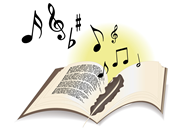 Writing lyrical poetry focuses on the composition of rhythmic words that go beyond the beat of how they sound—they tell a story, a mental snapshot of a specific moment in one’s memory. The learning activity here was inspired by Kit Wright’s poem “Red Boots On” and the lovely, sentimental story behind this poem.
Writing lyrical poetry focuses on the composition of rhythmic words that go beyond the beat of how they sound—they tell a story, a mental snapshot of a specific moment in one’s memory. The learning activity here was inspired by Kit Wright’s poem “Red Boots On” and the lovely, sentimental story behind this poem.
Wright was describing a scene in the past that was forever etched in his memory: a happy image of his girlfriend, wearing red boots, stomping and kicking up the snow. It was a picture of pure and simple joy in the middle of a heavy snow. The poem has the stomp-like rhythm, so reading it makes one feel like singing the lines. The repetition of a four-line stanza (which works as a chorus) makes it even more musical. Below is the chorus, which also reveals the main theme and title of Wright’s poem.
She’s got
Red boots on, she’s got
Red boots on,
Kicking up the winter,
Till the winter’s gone.
(Read the full poem with the author’s comments on thepoetryarchive.org.)
Lyrical Poetry Objectives
Student Learning Objectives
- Learn how to read and appreciate lyric poetry.
- Compose a lyrical poem based on my personal observations of an incident or experience.
- Write a catchy four-line stanza that will be repeated twice in the poem; this should carry the theme of the poem.
Student Language Objectives
- Learn how to use prepositions in a lyric poem.
- Identify and use proper names in the text.
- Use rhyming words to build rhythm and beat in the texts.
- Adopt a linguistic style that uses symbolism or a description of an object used in the text to suggest a deeper meaning or relationship with the subject of the poem.
Materials
- Digital camera or smartphone/tablet with camera functions
- Internet connection and computer (computer lab)
Pretask Discussion
The following is a set of questions to set the theme of the learning activity.
Look around you. What do you see? You see people walking by. You see some people chattering away. You see them “doing” something. If you could pause what you’re seeing and take a moment to capture that scene—what do you really see? Focus on one single aspect of that action and describe: What does it mean to you? Or to the person you are observing?
Show/share with students Kit Wright’s poem. Discuss the story behind the poem. Use this poem to point out the language or linguistic aspects of Wright’s lyric poem, such as the use of prepositions, chorus, rhythm and rhymes, and symbolism. Here are some example questions and tasks:
- What are the prepositions used in this poem?
- Identify the proper names used in this poem.
- What are the words that rhyme in this poem?
- What’s the chorus or the stanza that is repeated in the poem?
- What’s the object in this poem that suggests a deeper meaning that is connected to the person actually using/wearing it? (e.g. red boots representing happiness)
Prewriting Task
The following is the list of instructions given to students to help them with the writing task.
- Outside the classroom (school grounds), spend 10 minutes looking at the people around you.
- Take a picture of that scene (using your smartphone or digital camera), and upload it on your computer. Using visualization, list a few words that describe what you’re seeing.
- Describe the actions, the objects, the people.
- What are they doing? What do you think they’re thinking? What objects do you see they’re using/wearing? What do these things suggest, especially in relation to their moods?
Writing Task
Have students write an 8–10 stanza poem that describes a scene that they have observed. They must use:
- Symbolism
- A chorus (to be repeated twice—once in the middle and once at the end)
Below is an example of a student’s work.
Brilliant smile on
by Wen
Way on my picture-taking trip
All round I've walked and fallen
I found nothing to take a picture of
"There he is, with that smile, he's chosen!"
I found it,
The picture of my poem.
He's got
His brilliant smile on,
he's got
His brilliant smile on,
Showing his white teeth,
With that beautiful smile on.
So Rushing back to the classroom,
Putting on my picture,
I wrote the poem happily.
It's done with my venture.
I'm chilling
in the poetry classroom.
He's got
His brilliant smile on, he's got
His brilliant smile on,
Showing his white teeth,
With that beautiful smile on
The poem above is a humorous way of presenting the task given and writing something creative about it. The photo shows the student-poet’s classmate sitting on a bench with a big smile on his face. The poem begins with a description of a frantic search for a subject for this poetry task. When he was about to give up, he found his subject—his close friend sitting on a bench. He took a picture of him and describes his friend flashing his shiny, white teeth; a clear manifestation of a happy smile. The student-poet continues, describing how he hurriedly went back to finishing his work. Because he had a happy subject to work on, he wrote joyfully and finished his “venture” in a snap, giving him a reason to “chill-out” with the remaining class time. This poem is an excellent example of a student describing exactly what he was doing—depicting a situation he was in—and certainly having fun doing it.
Postwriting Task
Students are encouraged to share their poems by reading them aloud in class. They can publish their work online or on your e-learning platform (if any). The student-poet who composed the example poem had a great time reading it aloud. The rest of the class also had a good laugh, because everyone knew both the poet and the subject, and they could definitely relate to the theme of his poem, as they were all busy doing the same.
On Students’ Errors
As English learners, students make mistakes in both written and oral production. Language errors must be pointed out and corrected. However, since this is a creative writing activity, it is always difficult to correct “mistakes,” as doing it often can crush students’ creative spirit. It is best to give constructive criticism.
Pedagogical Implications
The learning activity shared in this article shows how mobile technology can be used in enhancing students’ learning—in particular, in aiding their poetry writing processes from visualization to presentation of texts that elicit emotional connection and description of the images used. Going mobile does not only refer to the use of mobile phones with built-in cameras, but in a much broader sense exemplifies mobility and connectivity.
Urging students to move around, in and out of the classroom for a stipulated time, encourages them to be mobile and spontaneous. It also provides them the chance to exert effort, tap their interests, and increase their motivation to be creative. In addition, using a camera phone in taking original photos of the subject that students will be writing about adds to the authenticity of the activity.
The pedagogical implications of learning how to write poetry can be focused on personal growth, culture and identity, textual and linguistic skills, and constructive learning. Most important, students learn the artistic play of words, which allows them to connect with their own feelings and describe them in a way that makes readers relate to the message.
___________________________
Dr. Aiden Yeh is a full-time assistant professor at Wenzao Ursuline University of Languages in Taiwan. She teaches creative writing and other ESP courses. She received her PhD in applied linguistics from the University of Birmingham, UK. She is a member of the Electronic Village Online Coordinating Team and has served on the TESOL CALL-IS Steering Committee, on the TESOL Technology Advisory Committee, and as the NNEST-IS Chair in 2010.
TESOL Blogs
Interested in writing a blog for TESOL?
Contact
Tomiko Breland with your idea or for submission details.
Check out the latest TESOL Blogs:
|
TESOL Convention Blogs
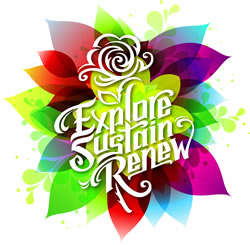 TESOL bloggers keep you up-to-date and posted on what's happening at the 2014 TESOL convention in Portland, Oregon, live! Read about what sessions they're attending, what the hot topics are this year, and what not to miss next year. Read More. TESOL bloggers keep you up-to-date and posted on what's happening at the 2014 TESOL convention in Portland, Oregon, live! Read about what sessions they're attending, what the hot topics are this year, and what not to miss next year. Read More.
|
|
ESL Games: Synonym Lingo Game, by Marc Anderson
 The Game: Synonym Lingo helps to build reading skills and vocabulary. The Game: Synonym Lingo helps to build reading skills and vocabulary.
Research Says: Using this game with ESL students much like other games for vocabulary presentation and revision, according to Agnieszka Uberman in the article “The Use of Games for Vocabulary. Read More. |
|
6 Ideas for Writing in the Real World, by Elena Shvidko
 Do your students feel uncomfortable writing in the real world? This is a fair concern, and in fact, I can definitely relate to that—when I started to learn English, I was afraid of making mistakes, which oftentimes made me quite anxious. I eventually overcame this fear with the help of my patient teachers and their authentic assignments that allowed me to practice English beyond the classroom. Do your students feel uncomfortable writing in the real world? This is a fair concern, and in fact, I can definitely relate to that—when I started to learn English, I was afraid of making mistakes, which oftentimes made me quite anxious. I eventually overcame this fear with the help of my patient teachers and their authentic assignments that allowed me to practice English beyond the classroom.
There are a whole variety of strategies and activities that could help your students write outside the classroom. I wanted to share some of them...Read More. |
|
Reflections From TESOL’s First Egyptian President: 10 Accomplishments and Lessons Learned, by Deena Boraie
 Time has flown—it seems like it was only yesterday when I was installed as TESOL president in Dallas in March 2013. It has been an amazing year! I was extremely busy; I learned a lot, did a lot, and loved it all. I reviewed what I wrote in the summer of 2011 on my election ballot and here are the three things I promised to do back then: Time has flown—it seems like it was only yesterday when I was installed as TESOL president in Dallas in March 2013. It has been an amazing year! I was extremely busy; I learned a lot, did a lot, and loved it all. I reviewed what I wrote in the summer of 2011 on my election ballot and here are the three things I promised to do back then:
- support the development and implementation of powerful professional learning opportunities for all TESOL members in a variety of contexts
- develop relationships and improve communication with all possible partners and organizations in support of TESOL’s efforts
- bridge research and practice to encourage research in TESOL to focus on the kinds of professional knowledge that teachers need.
Read More. |
TESOL Bookstore

Now It’s Easy to Assess Your English Language Learners
TESOL Press Books Can Help
NEW RELEASE! Assessing English Learners in U.S. Schools
Timothy L. Farnsworth and Margaret E. Malone
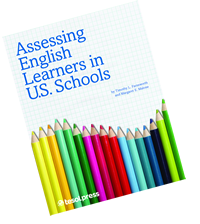 This book views teachers as the people best able to make their students successful. The decisions teachers make about assessments in the areas of literacy, oral language, and content-specific language development result in actionable information. Short reflections, jargon sidebars, and chapter activities make this an enjoyable, user-friendly resource for teachers in any classroom.
This book views teachers as the people best able to make their students successful. The decisions teachers make about assessments in the areas of literacy, oral language, and content-specific language development result in actionable information. Short reflections, jargon sidebars, and chapter activities make this an enjoyable, user-friendly resource for teachers in any classroom.
New Ways of Classroom Assessment, revised
James Dean Brown, Editor
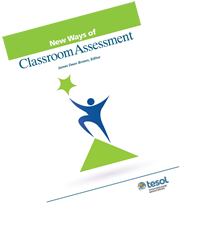 In this revised edition in the popular New Ways Series, teachers contributed activities whose aim was clearly to help their students. Consequently, more than 100 activities enlighten both students and teachers but are thoroughly integrated into the language teaching and learning processes and do not stand out as different, formal, threatening, or interruptive in the classroom.
In this revised edition in the popular New Ways Series, teachers contributed activities whose aim was clearly to help their students. Consequently, more than 100 activities enlighten both students and teachers but are thoroughly integrated into the language teaching and learning processes and do not stand out as different, formal, threatening, or interruptive in the classroom.
Assessment Practices
Christine Coombe and Nancy Hubley, Editors
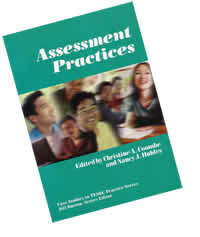 For language educators, teachers, and testers, these studies analyze assessment design, implementation, and review for classrooms, formal tests, programs, curricula, and self-assessment in global scenarios.
For language educators, teachers, and testers, these studies analyze assessment design, implementation, and review for classrooms, formal tests, programs, curricula, and self-assessment in global scenarios.